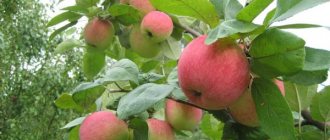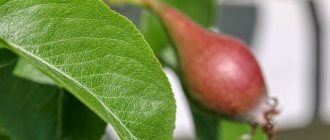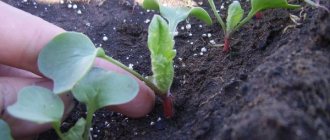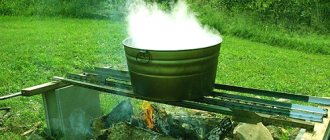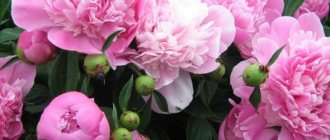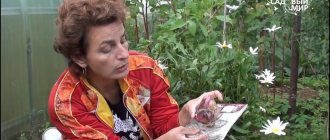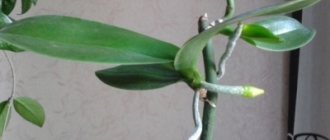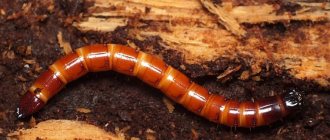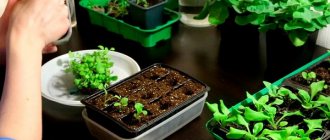Treatment of winter damage
As soon as the snow melts, carefully inspect the trunks of the apple trees. Perhaps there were signs of damage there. This may be the consequences of severe frosts or good appetite of rodents. In any case, the tree needs to be “treated” before the start of the season.
If mice or hares have chewed the bark slightly, the damaged areas should be covered with RanNet, BlagoSad or Zhivitsa paste.
More severe damage can be revived with bridge grafting.
- Bridge grafting will save a damaged tree: step-by-step instructions in pictures
In the spring, when arriving at their dacha for the first time, many gardeners discover trees damaged by rodents. How to save a garden chewed by mice and hares?
If brown spots are found on the bark, the damaged bark has burst or is falling away from the tree - this may be a sign of frost damage. Remove dead parts with a sharp knife and seal the cuts. To “treat” more severe damage, also use bridge grafting.
If the tree has suffered from sunburn (dark spots, peeling bark, cracks on the trunk and branches), strip the damaged bark to a healthy layer, disinfect the wound with a 1% solution of copper sulfate or 3% solution of iron sulfate (100 or 300 g per bucket of water respectively). Then cover the damaged area with drying oil-based paint or special garden putty and tie it with a dark cloth or film. Be sure to feed this tree in the spring, focusing not on nitrogen, but on phosphorus-potassium mixtures, and also add 1-2 liters of ash to the tree trunk.
- Dangerous luminary: sunburn of the bark of trees and other plants
Do you find cracks in the bark of trees every spring? We will tell you why this happens and what needs to be done.
Summer care for apple trees
During the summer months, tree care activities become fewer, but they do not disappear completely. So, during especially dry periods, the apple tree will have to be moistened; if there are a large number of ovaries, their number will be reduced. Let's look at each point in more detail.
How to water apple trees in summer
Watering is especially important for young trees that have not had time to take root to a sufficient depth. A critical signal about the need for urgent hydration is wilting of leaves.
You don’t have to water too often, but you need to take this activity seriously. Water should penetrate down to the depth of the roots (in the first or second year of life, this parameter is about 80 cm). The temperature of the liquid should be between 18-25 degrees.
Watering rates are as follows:
- For a young tree (1-2 years) - 4-5 buckets at a time, watering is done every two weeks. If there has been heavy rain, this period is postponed, otherwise excessive moisture will lead to rotting of the root system.
- An adult apple tree is watered at the rate of 70-100 liters of water per 1 square meter. trunk circle.
Many novice gardeners are interested in whether it is possible to water apple trees in the heat. When the weather is particularly hot, it is better to postpone watering until late in the evening. Otherwise, drops lingering on the trunk and branches can act as a lens and lead to sunburn.
Young apple trees are watered into holes made around the trunk. Adult plants are watered in grooves dug to a depth of 0.5 meters. It would not be a bad idea to create punctures in the soil, which provide an additional flow of oxygen to the roots. They are made at a distance of 60 cm from each other, their depth is 30-40 cm. For this event, an ordinary crowbar is perfect, which is stuck into the ground, thereby leaving holes suitable for the parameters.
Harvest quantity control
If there are a large number of ovaries, their number should be reduced, otherwise the fruits will be small in size and will lose some of their taste. This type of care for young apple trees is especially important. If the required set of measures is not carried out in the summer, the tree will not be able to hold a large volume of harvest on its branches, as a result, some branches will break off, and the apple tree itself will spend too much energy, which is also needed for a successful wintering.
Thinning of the set fruits is carried out when they are fully formed and begin to collect juice. Each bunch should be examined and the central fruit removed from it. It is this that usually has an irregular shape. You should also examine the remaining ovaries for defects; if any, the apples are removed.
A general inspection of the branch allows you to estimate the number of ovaries; if the distance between them is less than 10 centimeters, then whole bunches are thinned out. Branches that are too overloaded have a risk of breaking, so you need to constantly monitor the process of fruit growth and, if necessary, remove part of them or install supports.
Tree trunk protection in spring
In the spring, whitening apple trees is useless, and if you miss the deadline, it can even be harmful. Trees receive the main benefit from whitewashing from late winter to early spring. Then the sun does not reflect off the snow, it becomes softer, the frosts pass, and the foliage covers the bark. Therefore, whitewashing is carried out in the fall. But if you haven't, install sun shields near unwhitened trees.
Such devices will be needed if the autumn whitewash did not tolerate moisture and peeled off the trunk.
Re-painting should be carried out no later than mid-February and only at temperatures above 5°C.
If at the end of winter it is still too cold, then young trees can be protected from burns with shields on the southeast side or with a thin layer of burlap, spunbond, paper and newspapers. They will also cope well with the treacherous first rays.
- Eternal questions: to whiten or not to whiten trees in spring?
Over the winter, the whitewash from the trunks in the garden was washed off, and you are wondering whether the trees need to be whitewashed again? Let's sort this out once and for all!
April May
If you are just planning to plant apple trees, then this can be done from mid-March to mid-May, depending on the region.
Apple tree planting
The area for the apple tree must be either leveled or with a permissible slope of 1–2°, oriented to the south, southeast or southwest.
Where not to plant an apple tree
It is not advisable to place an apple tree:
- on acidic soils,
- where pome trees previously grew,
- where the groundwater level is closer than 2 m to the soil surface.
How to prepare a landing site
- Dig the area where nothing grew before as deeply as possible, turning the sod upside down, loosen the soil well. It is advisable to do this at least a week before planting so that the grass begins to rot.
- In areas with wheatgrass, carefully select its roots, otherwise it will be extremely difficult to remove it later without the help of herbicides.
- If the area has been prepared in the fall, simply dig it deeply and add 2–3 kg of rotted manure or 250–300 g of wood ash per 1 m².
Tips for preparing the soil
- On chernozem soils, when planting, you can add nothing at all except expanded clay - the apple tree is not so demanding on nutrition.
- On clay , you need to add baking powder; its role is played by river sand - 1-2 buckets.
- On sandy soil, which does not allow the roots to anchor well, you need to add 1-2 buckets of clay or black soil. They should be mixed in equal parts with humus and add up to 100 g of phosphorus-potassium fertilizers - the amount of fertilizer is greater, since sandy soils are usually very poor.
How to make a planting hole
About 2-3 days before planting the seedling, prepare the planting hole. Its dimensions depend on the volume of the root system of the seedling: the roots should be positioned freely, without creases or bends. It is usually 60–70 cm in diameter and 60 cm in depth.
On heavy soils, place a couple of handfuls of expanded clay in the bottom for drainage. As for mineral fertilizers, add only phosphorus-potassium fertilizers (50–100 g per hole), you can use wood ash and superphosphate. Mix fertilizers with 3–5 liters of humus.
| To make trees take root faster, choose one- or two-year-old seedlings |
How to plant
- Before planting, dip the roots in earthen or clay mash. Soil will then stick to them, and this will reduce the risk of voids forming between the roots and the soil.
- When planting, do not deepen the root collar (the place where the roots enter the trunk).
- After placing the seedling, compact the soil very well, then water (2 buckets of water per apple tree). Mulch the surface.
Then, for a month, water the apple trees about 2 times a week, using 1 bucket of water for each, until they begin to actively grow.
Apple trees, depending on the variety, will produce their first harvest 3–6 years after planting.
Photo: apple tree seedlings grown from seeds
Pruning an apple tree in spring
Carry out pruning work before sap flow begins. The air temperature should not be lower than –5°C. When doing this, use a well-sharpened pruning shears and a sharp saw. The blade should be free of dirt and rust.
First of all, carry out sanitary pruning. Remove all broken and dry branches that did not survive the winter, as well as root growth. Cut all branches into rings. When formative pruning, try to create a harmonious, beautiful crown that is well ventilated and illuminated by the sun.
Cut out shading branches or branches that grow at sharp angles. Leave a distance of 40-70 cm between the skeletal branches. Cut out the second-order branches so that branches remain that “look” to the sides and slightly upward.
Remove branches that grow inside the crown or intersect with fruiting shoots.
If the tree is taller than 4 m, shorten the top. Usually leave a height of no more than 3.5 m.
Treat each cut with RanNet, Blagosad, Zhivitsa or special garden paint.
Remember that heavy pruning can weaken the tree.
- How to properly prune an apple tree in spring - tips for beginning gardeners
We tell you how to trim apple tree branches without harming the tree.
Principles of autumn care
In autumn, apple orchard care activities are carried out for the following purposes:
- increased resistance to low temperatures;
- increase in harvest volume;
- improving the quality of apples.
Specific deadlines for completing autumn work have not been established; the main thing is that everything needs to be done before the frosts become stable.
Pruning branches
First of all, autumn pruning is performed for sanitary purposes. In the process, they get rid of broken, dry and diseased branches. Shoots growing inside the crown or directly upward are also removed.
When pruning, burrs and burrs of the bark must not be allowed; the cuts must be perfectly even.
After the procedure, the cut sites are treated with copper sulfate (1%), and after they are completely dry - with garden pitch.
Barrel processing
Trunk care includes several operations, namely:
- identification of lichen and moss with subsequent elimination;
- pest elimination;
- whitewash
In small quantities, lichen and moss practically do not harm the apple tree, but covering the entire trunk with them disrupts air exchange. In addition, these organisms have the ability to quickly spread throughout the garden. Detected growths are removed using a plastic scraper, and then these places are treated with garden pitch or copper sulfate.
An important autumn activity includes getting rid of pests. As a rule, they settle under exfoliated bark, under which they survive the cold winter painlessly. To destroy them, apple trees are sprayed with insecticides, for example, Aktara or Karbofos.
Autumn procedures with pesticides are permissible only after the entire harvest has been harvested.
To eliminate bacteria and fungal spores, use the drug “Horus”, a solution of urea or copper sulfate diluted in a bucket of water in the amount of 300 g.
Whitewashing protects the garden from low temperatures and rodents. In this case, a composition of components diluted with water is recommended:
- 500 g of copper sulfate;
- 200 g wood glue;
- 3 kg lime.
Alternatively, whitewash can be purchased in ready-made form, for example, such as “Gardener”.
Treatment for diseases and pests in spring
In early spring, during the period from snow melting to bud break, the first treatment for diseases is carried out.
For this, copper sulfate (2-3% solution) or industrial preparations based on copper are used: Abiga-Pik, Indigo, OxyHOM, HOM. You can also use 3% Bordeaux mixture.
The next treatment of the garden is carried out 2-3 weeks after the first, when the buds have already burst, but the leaves have not yet appeared. At this time, use a 1% solution of Bordeaux mixture. Or chemical fungicides: Discor, Forecast, Skor, Horus, etc.
When working with chemicals, follow the instructions on the packaging.
When thawed patches appear around the trunk, trapping belts are installed on the trunks. This will help protect the plant from crawling pests.
- Hunting belt for protecting trees: when to apply and remove, how to make it yourself
In the spring, after the trees in the garden awaken, it is time to put on hunting belts. Do you use these devices?
Chemicals are also used in pest control: Aktara, Alatar, Aliot, Inta-Vir, Iskra Zolotaya, etc.
The second spraying against pests, if necessary, is carried out after flowering. But at this time it is better to abandon chemicals in favor of biological agents: Insetim, Lepidocid, Madex Twin, Fitoverm, etc.
- Calendar for garden treatment against diseases and pests
Don't wait for diseases and pests to take over your garden - be proactive!
How to properly store apples
Freshly picked fruits should be cooled to +4° C and immediately placed in storage.
As a rule, apples are stored in wooden boxes. But such containers have a drawback - the wood can rot.
You can also use plastic containers (pre-washed and disinfected).
To improve the preservation of apples, the containers are filled with sawdust from hardwood trees.
It is better not to use conifers - they impart a characteristic resinous smell to the fruits.
There is also no need to use straw - it quickly becomes moldy.
Wood shavings should have no more than 15-20% moisture content.
- It is also useful to arrange apple fruits with maple or oak leaves, peat chips, and dry moss. These plant components have antibacterial properties.
The apples are first sorted by variety, degree of ripeness and size. Large fruits ripen fastest.
Choose containers for storing them with small gaps.
- Before placing apples there, treat the containers with bleach solution and dry thoroughly.
- At the bottom of the box, place sheets of clean paper and sawdust in the amount necessary to completely cover the first layer of fruit.
- Place the apples. It is better to isolate each fruit by wrapping it in paper. The very last layer of fruit is covered with paper leaves and covered with sawdust.
- The container is sealed.
To insulate the layers of apples, they can be separated with pads made of cardboard or synthetic material. This will help prevent the spread of diseases in stored fruits and ensure their protection during transportation.
We have become acquainted with the basic rules for caring for apple trees, but mechanical care alone will not be enough for our garden.
It is equally important to love him and be grateful for the beauty and joy that he gives us!
And our garden will gladly protect us with its crown from the sun in the hot summer, delight us with the beauty of its flowering in the spring and, of course, give us a rich harvest of beautiful apples in the fall.
I wish you good luck, good harvests and that your garden never gets sick and pests do not bother it. But still, we will talk about possible diseases and pests of our apple orchard in future articles.
I also suggest watching a video about caring for apple trees to “reinforce the material you have covered.” See you soon, dear readers!
Fertilizing apple trees in spring
In early spring, they begin to fertilize the trees in the garden. At this time, the plant requires a lot of nitrogen to grow green mass.
Apply 30-50 g of urea per 1 sq.m of trunk circle (depending on the size of the plant). Urea can be replaced with organic matter (a solution of bird droppings 1:20, manure 1:10 or mature compost). For one mature tree you need to add 2-4 buckets of organic matter.
Later, around May, add 30-50 g of simple superphosphate or 80 g of phosphate rock (per 1 sq.m.) into the soil around the tree trunk. And also 20-25 g (per 1 sq.m.) of potassium sulfate. Or replace these fertilizers with 30-50 g of nitroammophoska. You can also use humates.
- Your first garden: what, how and when to feed fruit trees in spring
Spring fertilization of the garden is an important stage in caring for fruit trees. Find out how to carry out this operation with maximum benefit for the plants.
Hello, dear readers!
So you and I have started our own apple orchard, having previously selected the varieties of apple trees we liked, bought seedlings and planted them in pre-selected places.
So what's next? What else needs to be done to ensure that our garden continues to delight both our soul and our eyes?
Our still very young garden really needs constant care and attention, because only by giving something can we count on reciprocal gratitude in the form of generous harvests.
Proper care of the apple tree will provide the owner with tasty and very healthy fruits throughout the winter.
Only with proper care will the apple orchard become our pride and the main decoration of our garden plot.
How to grow an apple tree correctly, how to take care of it - we’ll tell you about this now.
Loosening and mulching of tree trunk circles
After winter, when the soil around the tree trunk has become compacted, and also after watering, it needs to be loosened. This will improve the supply of oxygen to the roots.
To better retain moisture, the tree trunk circles are mulched with rotted sawdust, bark, hay, compost, humus, etc. Mulch should not be poured close to the trunk - the bark may support it.
In addition to retaining moisture, a 5-6 cm layer of mulch will prevent the growth of weeds and protect against freezing if frost returns.
If you plan to use fresh sawdust as mulch, you need to prepare them in advance - soak them in a solution of nitrogen-containing fertilizer.
Experienced summer residents know that work in the apple orchard does not end there. You also need to control the catch belts, don’t forget about watering, bend branches, etc. But after such care, the trees will certainly reward you with a generous harvest.
Features of modern hybrids and clones
Not all gardeners can plant a vigorous garden due to the small size of the plot. Then modern selection comes to the rescue. Experts have created many varieties of fruit trees that take up little space.
Among them are representatives of the following groups:
How to properly plant columnar apple trees “Moscow Necklace”, “Currency”, “President”
In 1964, Canadian breeders discovered a spontaneous mutation on the Mackintosh apple tree. There were no characteristic branches on the shoot, and the fruits were located on short internodes, close to each other. This feature formed the basis for hybridization, as a result of which the columnar group appeared.
Although the crown of the clones is narrow and compact, the root system is powerful, so the planting pit is prepared in the same way as for vigorous varieties
The difference is the distance between the trees. Columnar plants are planted at intervals of 70–80 cm.
Columnar varieties are often placed along the fence. If the fence is solid and lightproof, then it is better to choose the western side. In the morning, the row is in the shade for a short time, and in the afternoon it will be illuminated for a long time, which has a beneficial effect on the size and taste of the apples.
The trees are positioned so that they do not touch each other or the fence. Each apple tree needs access from all sides for easy care.
The distance in the row between columnar apple trees is 50 – 70 cm
Columnar apple trees are planted in the same way as vigorous varieties, preparing in advance a planting hole filled with fertile soil of neutral reaction . Most hybrids in this group are sold with a clod of soil. This means that planting can be done at any time of the year.
The plant feels almost no stress when placed in a new location. Recently, it is often practiced to plant a flowering tree in the spring, and in the summer, actually harvest the first harvest.
Pruning columnar apple trees is radically different from forming the crown of vigorous varieties. You can't cut off the top! If the growth point is damaged, the side shoots begin to branch and the column turns into an ordinary tree.
Among owners of small plots, “Moscow Necklace”, the original name of the variety “X - 2” , is popular; it is also used on sale, like the second option.
Apple Columnar "Moscow Necklace"
Gardeners fell in love with the variety for its almost 100% survival rate and ease of care. Planting pattern: 50–70 cm between trees in a row and 1.2 m between rows. The rows are directed from south to north. With the exception of pruning, care for columnar apple trees is carried out in the same way as for vigorous winter varieties.
The harvest is harvested in October. In the first year they receive several pieces - 5 -6. An adult tree can produce 4–7 kg.
The disadvantage of columnar apple trees is their relatively short life span - 15 - 20 years.
Another popular representative of apple trees with a compact crown is the winter hybrid "Currency" . Famous for its long shelf life. When ripening in October, apples remain fresh and juicy until March and April.
Hybrid variety "Currency"
- The variety is planted both as seedlings and with a clod.
- Young plants with bare roots are transferred to open ground in April, May, and autumn after leaf fall, but no later than 2 weeks before the onset of stable frosts.
- The average height of the tree is 2 m, with a crown diameter of 20 cm.
- The first harvest ripens in the fifth year.
- The maximum number of apples from one mature tree is 6 kg.
An important advantage of the variety is its high resistance to a dangerous disease - scab . It also resists many pests well.
"Currency", as a typical columnar representative, has a superficial root system.
Thin hair-like roots are located close to the surface of the earth and are prone to drying out. To avoid frequent watering, tree trunk circles or row strips are covered with a thick layer of mulch to prevent evaporation.
For protection and as MRL (slow-acting fertilizer) use:
- Dried grass
- Straw
- wood chips
- fine bark
The material is evenly distributed around the trees, in a layer of 7–10 cm. From time to time, the mulch needs to be checked so that it does not rot due to overcompaction. Many gardeners successfully use EM preparations. Organic farming products activate the growth of beneficial microflora that synthesize humus in the soil.
This type of care creates a triple benefit . Mulch retains moisture and protects against weeds, EM preparations provide nutrition to the apple tree. The variety needs shelter for the winter in the first years of its life. An adult tree is highly frost-resistant and does not need protection from the cold.
The world-famous “President” was obtained by domestic specialists by crossing the varieties “Vazhak” and “Obilnoe”. Belongs to autumn varieties. The fruits are stored until the New Year.
Botanical features:
- The powerful trunk grows up to two meters.
- The crown width does not exceed 25 cm.
- Fruitlets and ringlets are densely located along the trunk.
The columnar hybrid is unpretentious to the soil and grows well on sandy loam soil and medium loam. The best yield is achieved on rich, light loams. Care is typical for representatives of this category of apple trees.
Where to place dwarf hybrids “Welsea” and “Melba” on the site and how to care for them
Dwarf apple trees are often called new species. This is wrong! Low-growing hybrids are obtained by grafting the desired variety onto a small clonal rootstock, which are divided into dwarf and semi-dwarf. Low-growing varieties of apple trees, especially used as rootstocks, are called dusens.
Apple tree "Welsea"
Type III is the most common; dwarf varieties are grafted onto it, the height of which does not exceed 4 m . The crown exactly resembles a vigorous apple tree, but its diameter is on average 3 m.
Dwarf varieties are grafted onto miniature rootstocks - paradise.
Trees propagated by budding on low-growing apple trees have a shallow root system that is prone to wind damage . Therefore, when growing, they are attached to a powerful support, which accompanies them throughout their lives.
Another drawback is low frost resistance, due to which dwarf varieties are grown in the southern regions. But, there are exceptions for colder climate zones, for example, the hybrid of American origin "Welsea". It is popular due to its high yield - up to 200 kg per tree, and long-term preservation of the fruit. The fruits are harvested at the end of September and eaten from October to February.
Dwarf apple trees grow up to 3 – 4 m in diameter
For semi-dwarf varieties, resistance to low temperatures is relatively high, up to minus 25 C. According to the international USDA gradation, it belongs to the fifth climatic zone.
Planting is no different from the methods for vigorous varieties. But care requires specific attention. The structure of the crown differs from the shape of a typical apple tree. The branches of "Welsie" grow at an acute angle to the trunk and are directed upward.
Without intervention, a wide pyramidal crown is formed. Therefore, from the first years of life, while the shoots are flexible, they are bent and fixed with pegs and a cord in a horizontal position.
Using this method, the branches are wrapped with soft cloth where the twine is attached so as not to damage the bark. When the shoots take the desired position and become woody, the winding and cord are replaced with others. The lower tier of skeletal branches is fixed, not only to maintain shape, but to avoid creases from the wind.
Another feature is the tendency to excessive fruiting, which has to be regulated. Otherwise, the fruits will be small and sour. The branches break from the excess harvest. To prevent overload, the excess ovary is removed.
obtained as a result of open pollination of the Canadian variety "Meckintosh", deserves special attention Belongs to the autumn group, ripens in late August, early September. Apples are well preserved until March next year.
The variety is resistant to scab, but does not tolerate severe frosts.
An open, sunny place, well protected from strong winds and seasonal drafts, is suitable for planting. The variety requires strong support throughout its life. Due to their shallow root system, mature trees are susceptible to wind damage.
A planting hole is prepared for the seedlings, as for vigorous apple trees, with a diameter of 1 m and 70 cm in depth . If there are several trees, then the distance between them in a row is 3 - 4 m, in the row spacing - 5 m. The shape of the crown is rounded at the bottom and elongated at the top. Pruning and branch formation are not as intense as, for example, the Welsh variety.
Further care:
- Systematic watering - weekly in spring, from mid-summer - once every 10 - 15 days, moisture-charging watering in autumn - 70 - 80 liters.
- It is preferable to fertilize with organic fertilizers - leaf humus or rotted manure.
- In spring, spray with protective agents before flowering and immediately after it. Autumn treatment is carried out after leaf fall.
When choosing dwarf varieties, it is worth comparing the positive and negative properties of apple trees of this type.
A typical representative of semi-dwarfs is “Ural Bulk”
The middle niche between the dwarf and vigorous group is occupied by a variety measuring 4 – 5 m in height and 3 – 4 m in the crown . One of the favorites in the semi-dwarf Ural Liquid category. The variety was bred by crossing “Papirovka” and “Red Ranetka”. The shape and color of the apples exactly repeat the “Papirovka”.
Fruits of the Uralskaya nalivnaya apple tree
It begins to grow in the spring and blooms earlier than other apple trees. In this connection, autumn planting in pre-filled holes is recommended.
It lends itself well to grafting from cuttings.
- When caring, not only pruning is used, but also bending back of young branches. What is even more important is to prevent creases during a bountiful harvest.
- Valued for its high frost resistance; cases of successful wintering at minus 570 have been recorded.
- Generous fruiting amounts to more than 100 kg from one mature tree.
- The average productive age is 30 years or more with proper care.
What are standard apple trees, and how do they differ from traditional varieties?
The part of the trunk from the root collar to the first skeletal branch is called the trunk . Often the crown is formed more for beauty than for harvest. At the same time, branches are removed to the desired height or kerbovka is carried out, stimulating the growth of dormant buds.
Standard apple trees are formed for decoration and convenience
The method is used to obtain decorative forms, for example, weeping . To do this, the trunk is grown to the required height, the skeletal branches are cut short and cuttings are grafted onto them, directing them to the bottom. The method is more often used in ornamental gardening, but recently it has been successfully used on low-growing varieties of apple trees.
The result is a spectacular crown that looks unusual at any time of the year. When caring, you need to ensure that straight shoots of the rootstock do not grow. They are removed if shoots appear below the grafting site.
How to save an apple tree seedling until spring planting
A large selection of seedlings is usually available in the fall. But just a little more, and the frosts will break out, and it will be too late to plant trees. In this case, they need to be preserved until spring.
Prikop seedlings
The trees are buried until spring in a place where the snow is not blown away by the wind in winter. Wetlands are not suitable - stagnant water will inevitably lead to the seedlings becoming overheated.
How to do:
- Dig trenches 45 cm deep, make one side inclined at an angle of 30° and spill soil in the trench. The seedlings should be carefully examined, all dry branches should be cut off, and the leaves should be torn off to avoid rotting. If spots are noticeable on the stem, it is necessary to treat them with Fundazol.
- Seedlings are placed on the sloping side with their tops facing south and sprinkled 2/3 of their length.
- Water it with water and add soil.
- Compact the soil well so that cold air does not penetrate to the roots. You can put spruce branches under the plants or wrap them with agrofibre. The top of the trench should be covered with spruce branches or a plastic mesh, which will protect the seedlings from rodents.
For the winter, seedlings can be buried in a trench on the site
Snowing of seedlings
Snowmaking is a reliable way to preserve seedlings until spring planting. It is not too late to dig in plants in the garden even after precipitation.
- It is first necessary to properly pack the plants so that the root system is protected by a clean, moist substrate throughout the winter. You can use sand and moss, but it is more convenient to use sawdust. They are poured with boiling water, allowed to absorb the moisture and mixed well.
- Excess water is drained - excess moisture is unacceptable.
- Cooled, steamed sawdust is poured around the roots, creating a moist environment.
- Wrap the roots and root collar tightly with film to prevent them from drying out.
- Place the plants in the snow and cover them with a 15 cm thick snow cushion.
- Sawdust is scattered on top, about 10 cm, - this will be an air layer that prevents the rapid melting of the snow cover.
- After the snow melts in the spring, the seedlings are freed from sawdust and their roots are immersed in a solution with a growth stimulator for a day.
The seedlings will overwinter well under the snow cushion
Storing seedlings in the basement
If it is not possible to bury the seedlings in the garden, they can be stored in the basement or cold outbuilding, where the temperature is 0–3°C. For this:
- Sprinkle the roots of the plants with damp (not wet!) sawdust, place them in a plastic bag and tie them up. To prevent mice from damaging the tree, bait with poison is placed nearby.
- At above-zero temperatures in winter, the buds can awaken, so you need to make sure that the room is cool, open the windows and doors, letting in cold air.
- During the winter, check the condition of the root system of the seedlings several times. If the roots are dry, spray them with water, and at the first signs of mold, treat them with Fundazol solution.
When storing seedlings in the basement, it is necessary to regularly check the moisture content of the roots.
How to preserve seedlings in winter - video
What to do if the apple tree is bent over?
When, under the influence of strong winds, an apple tree bends in any direction, many people think that it can no longer be corrected. But this is not true. What should I do to make the tree straight again? You need to drive a stake into the ground on the side opposite to that into which the apple tree is bent, carefully pull the tree to it and tie it. You can also place a support on the side in which the apple tree is bent. Of course, the tree will not become straight in one day; this will take at least three years, after which it will be possible to remove the support.
September October
- In the fall, carry out the last fertilizing of the season - in mid-September, add 1 tbsp. l. potassium sulfate per 1 m² of trunk circle for adult plants and 0.5 tbsp. l. under the young.
- At the end of October, carry out moisture-recharging watering - pour 10 buckets of water under each apple tree and mulch the tree trunk circle with humus.
- Collect fall and winter apple varieties and store them.
- You can still have time to plant apple tree seedlings - all types of planting work are the same as in the spring.
Photo: apple trees on a trunk
Useful tips from experienced gardeners
What seasoned gardeners advise beginners:
- Don't expect quick results from folk remedies. Eco-compositions are used several times, and after rain they are completely washed off.
- When preparing solutions for spraying, mix them thoroughly - a small clot of chemical is enough for the tree to get burned.
- Do not limit yourself to one preventative spraying. It is advisable to alternate treatments with Bordeaux mixture, soda ash, Burgundy liquid and ferrous sulfate, every 10-14 days.
Spring care sets the apple tree growth program for the entire growing season. The development and fruiting of the tree, both during the current growing season and in subsequent years, depends on how correctly and timely all spring activities are carried out.
Planting seedlings
To move on to the question of how to care for an apple tree, you first need to know how to plant it correctly. This procedure must be performed in early spring - immediately after the snow melts.
You should make sure that the top layer of soil is not frozen, otherwise you can wait a little longer with planting. Typically the best time to plant apple tree seedlings is April or early May.
So, let's move on to the landing process itself. First of all, we mark with pegs the places where we will do this. It is advisable to leave at least four meters of free distance between plants so that each of them can fully develop. If the apple tree variety you are planting has a wide crown, then this distance should be five meters.
After marking, you need to dig a hole for each seedling. Its depth should be 0.6 m, width and length - 0.6-0.7 m. The clay or sandy part of the soil should be folded in one direction, and the humus part - separately, in the other. If the soil on your site is infertile, then you need to enrich it with substances useful for plants by pouring two buckets of humus, half a kilo of phosphate and about 60 grams of potassium fertilizers into each hole. All these substances must first be mixed with the top layer of excavated soil. Next, we remove the seedlings from the storage location and inspect them for dried or damaged roots. If any are found, delete them. Having poured fertilized soil into the bottom of the hole, make a layer of ordinary soil on top, not saturated with fertilizers. This is necessary to ensure that the roots of the plant do not come into direct contact with the fertilizer, as this can be harmful to them. Next, you need to place the seedling on top of the ground in the hole so that the root collar is exactly at the level of the soil surface. If it turns out to be much lower, the plants will grow much slower and worse, but if it is higher than necessary, the roots will begin to dry out. Next, we fill in the rest of the soil and compact it for better fixation of the plant.
Protecting apple trees from rodents
For this purpose, the plants are whitened. This procedure must be carried out in the case of young trees (four to five years old) whose bark has not yet hardened. Newly planted apple trees are whitened with a chalk solution. Older trees can be whitewashed with lime mortar if necessary. You need to prepare it as follows: add two kilograms of clay and twenty liters of water to six kilograms of freshly slaked lime. In addition, two hundred grams of wood glue, preheated, and a kilogram of copper sulfate can be added to the solution.
